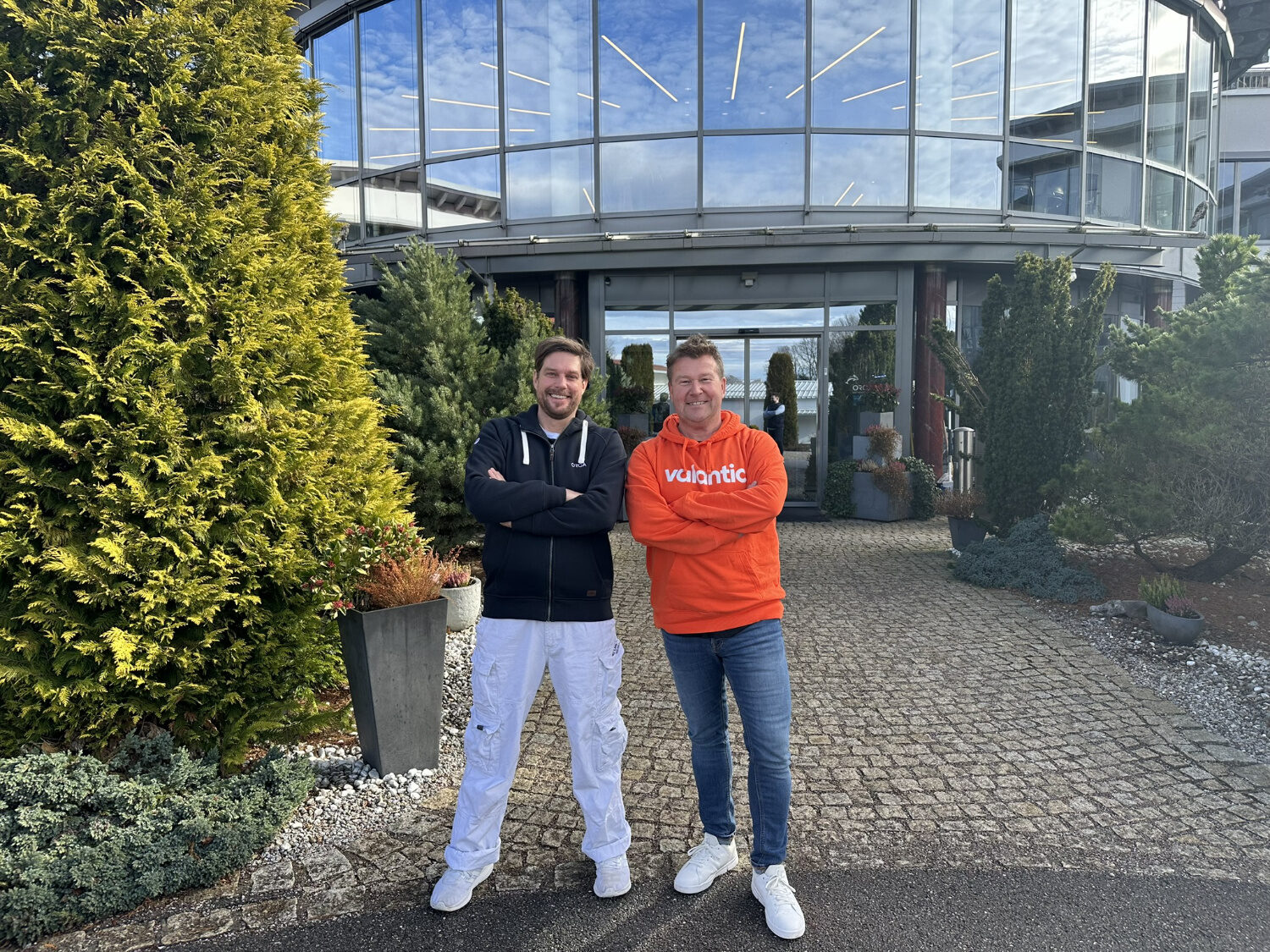Cleverly Managing Product Data: ORCA Software and valantic in Conversation
November 12, 2024

November 12, 2024

Today, we are joined by Alexander Mohr-Miesler, Head of Organization and Product Management at ORCA Software GmbH. In this interview, Alexander introduces the company’s platform, AUSSCHREIBEN.DE.
Marco Kahler, Director PIM at valantic CEC Germany GmbH and an expert on PIM, leads the interview.
Alexander: Hello Marco, first of all, thank you for the invitation to this format.
With AUSSCHREIBEN.DE, we aim to connect product manufacturers, planners, sales teams, architects, engineers, project managers, and crafts businesses. We offer tender texts in construction-typical formats (e.g., GAEB), which can be processed by planning software, ensuring smooth data transfer. The texts are available around the clock, always up to date, and free for the user. The product manufacturer also provides additional services for the planner, such as BIM objects, technical documentation, sustainability data, and installation instructions.
A: Through AUSSCHREIBEN.DE, we currently provide over 1.1 million tender texts from more than 750 product manufacturers for free download, which are generally generated from the manufacturers’ product data.
PIM systems are increasingly becoming the standard for product manufacturers to manage vast amounts of data efficiently. With appropriate interfaces like GAEB, BMEcat, or Excel, catalog data can be directly transferred from the PIM systems to AUSSCHREIBEN.DE and published. This minimizes disruptions and greatly facilitates the process.
The formats are used to upload the manufacturers’ catalog data to AUSSCHREIBEN.DE. GAEB (Joint Committee for Electronics in Construction) is the standard format for architects and tender issuers, used for specifications and contracting, among other things.
An API from a PIM system is not necessarily required since administrators can also automate data publication via FTP upload.
We too are exploring AI in the context of tender texts and the possibilities to support visitors and product manufacturers more precisely in their requirements. For example, data quality is automatically analyzed and anomalies reported during the vetting process before publication. This helps provide better tender texts and additional information for the visitor.
M: BMEcat is a standardized catalog format, essentially an XML structure that includes attributes from the PIM. It enables automated exchange of product information between trade partners. Communication via BMEcat plays a crucial role in business processes because it saves the recipient company a great deal of manual data entry effort compared to, say, PDF delivery. Through BMEcat, data can be synchronized fully automatically, so changes are available end-to-end in no time. This not only supports the optimization of time-to-market but also any correction processes, especially in the case of data errors.
A comparable standard format is the GS1 format in GDSN, also an XML format that can be submitted to the GDSN network. This is primarily used in the food sector, but also in healthcare and other industries. These catalog formats often go hand in hand with the requirements of standard classifications. When an ECLASS or ETIM format is required, it is usually passed on in a BMEcat as the transport medium because they contain structures that can map the classifications.
M: A great question. First of all, the basics must be ensured. This is often not as trivial as it sounds. A unique identification of the article must be provided, ensuring recognition both internally and externally – and by that, I mean towards both suppliers and customers. Information must increasingly be traceable in a larger end-to-end context due to regulatory aspects such as the Supply Chain Duty of Care Act and the digital product passport. Additionally, assignment to a taxonomy or classification, which can be transferred in the output to standard classifications like ETIM and ECLASS, is crucial.
Or, in case of doubt, it should be comprehensible to the data recipient so that the products can be properly assigned. Then, of course, the (technical) features and product descriptions must be meticulously maintained. These are all features by which a customer can identify whether the product is suitable for his project and meets his requirements. This often influences the purchase decision. Here, a corresponding granularity is required, enabling in-depth filtering and search possibilities.
In text management, we also see increasing demands for automation. This can be achieved through standardization and linking of attributes and text blocks, which is advantageous in predefined formats, and of course, the topic of AI comes into full play with texts that allow greater creative freedom.
And last but not least, the relationships of a product. Accessories, sets, bundles, and spare parts are quite common. Information about which products or components are compatible with each other, and the identification of successor or predecessor products, is particularly important in the technical field. This allows a customer to replace a component or part if it is phased out.
We’re far from the end with this explanation; the diversity and demands on product data are constantly growing and ultimately also provide the basis for our own AI applications.
A: The most important is the tender text itself: as detailed as necessary, but as compact as possible. It must enable the estimator and executor to price and assess the performance qualitatively. Alongside this are information pieces like the article number, MSRP (manufacturer’s suggested retail price), and cost group assignments. Additional information such as installation plans, graphics, certificates, and BIM data are also crucial. I always say: The article number is paramount!
A: At AUSSCHREIBEN.DE, we can offer technologies and functions that interconnect various product informations. Manufacturers can link their texts with BIM objects from CADENAS, CADClick, or BIMobject, and EPDs (Environmental Product Declarations) from DGNB (German Sustainable Building Council). The article number or GTIN (EAN) ensures that all information is correctly linked, preventing redundancies and data breaches.
A: I also thank you and hope to have advanced our mission a bit further. For 25 years, I’ve been accompanying ORCA in all matters concerning tendering, awarding, billing including cost management, and BIM. My demand and urgent appeal: Let’s make the construction and tendering process a bit smarter with digital tools! It’s high time!

Don't miss a thing.
Subscribe to our latest blog articles.